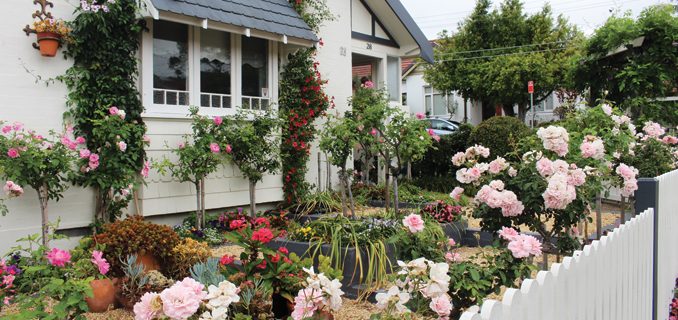
We give you the run-down of greenery styles best suited to the backyard, balcony or verge of the inconstant gardener. From a modicum of enthusiasm things can grow.
The local sanctuary
Returning soil to the natural ecosystem of the land you inhabit is probably the most worthy activity you can complete in your backyard, and is a style of gardening that you will find plenty of support with along the way. Both Canada Bay Council and the Inner West Council have online inventories of trees, shrubs and ground covers indigenous to different zones within the LGA, so you don’t have to put too much brain juice into your plant choices. An obvious benefit of re-introducing native plants to your garden is that they are perfectly adapted to the environment already. So is the local wildlife, which will thank you for your lax green-thumb efforts with extra visits to your neck of the woods.
One thing you probably want to check before planting is whether your soil is clay based or sand based, the Inner West has both and Indigenous plant species vary accordingly. (Scrunch up some soil and wet it, if it holds together and you can bend it, it’s clay. If it falls apart it’s sand) For inspiration (or cries of help) visit the Rozelle Bay or Marrickville Community Nurseries. Sign up your garden to the online ‘Habitat Stepping Stones’ campaign to receive free and discounted supplies. That’s right, free.
Garden of edible delights
Yards that double as orchards are still a common sight around areas of the Inner West such as Five Dock, Ashfield and Marrickville. A new movement of self-sustaining gardening is also gaining popularity, inspired by ideas of organic produce and, let’s face it, probably the added bonus of never having to get dressed to go to the supermarket or working out how to use those fiddly trolley tokens ever again. But let’s not pretend that growing things you might actually be prepared to eat later is a walk in the park.
You’ll more likely than not find your soil is sand based, which is good for herbs, bush eats like Lily Pily and native tamarind, root vegetables, berries and citrus trees. You can amp up your soil’s nutrition and water-retaining factor by adding homemade compost (less rubbish to take out), adding coir (that’s coconut husk for those playing at home, and it’s cheap) and a top layer of mulch to keep all that goodness in. Or you could install some elevated garden beds with different soil profiles for your favourite fruits. But I lost you at ‘install’, right?
Succulent heaven
Maybe you’ve been watching too much Netflix to notice, but succulents are the new black. There are so many societies, fan clubs and conferences dedicated to these guys that you might have thought they were orchids. But they are not, which is great news because succulents are notoriously easy to look after – especially if you are the cruel-to-be-kind style of gardener. Do not mulch them, do not sing to them, do not add compost, and water them only when you are feeling particularly effusive.
The real struggle with succulents is making a garden full of them look special. Luckily, they come in a striking array of colours, sizes and shapes. Disperse some stones, sands and native rush grasses around your patch of dirt to create a desert paradise or use low-lying succulents to create a simple border in an otherwise teeming backyard.

